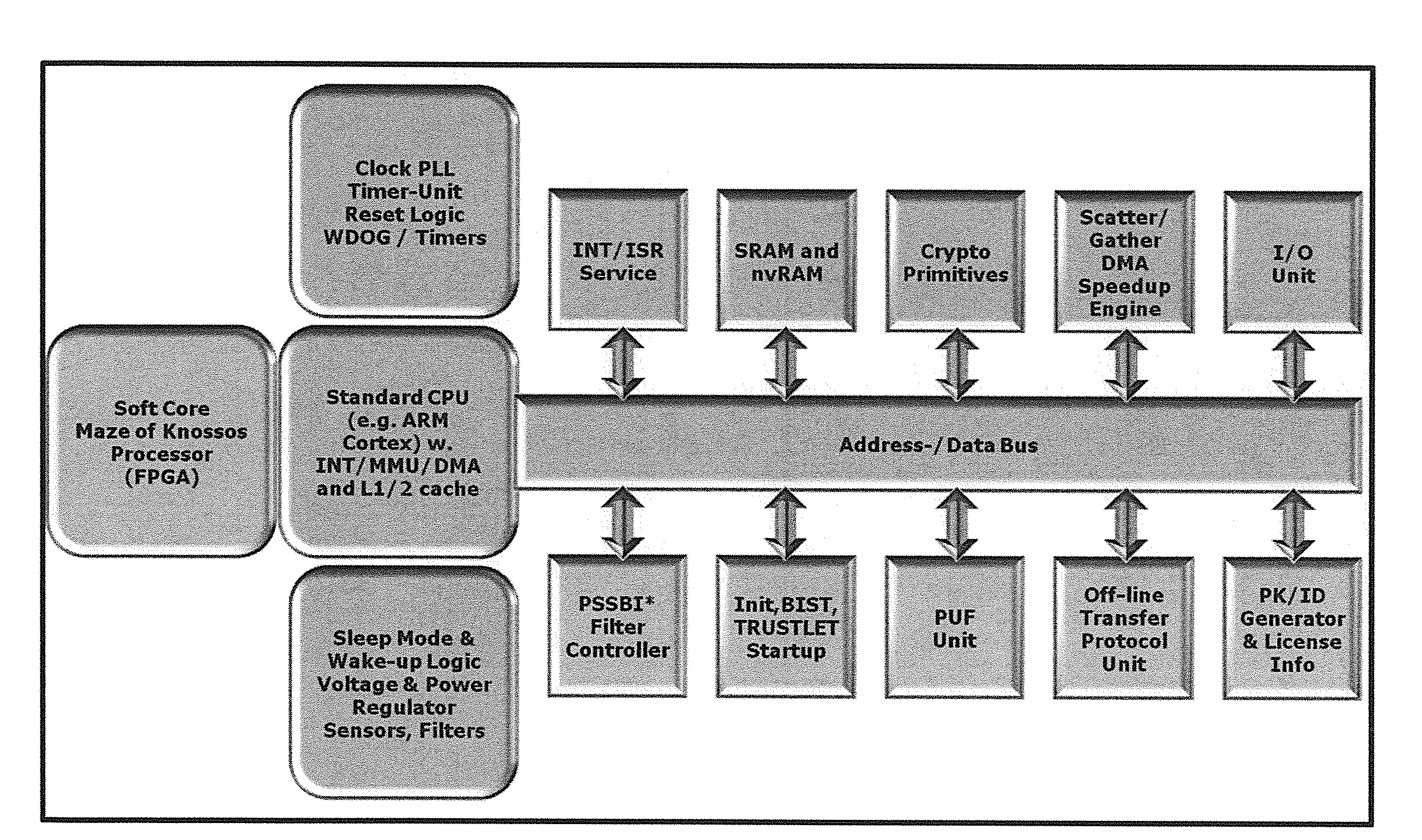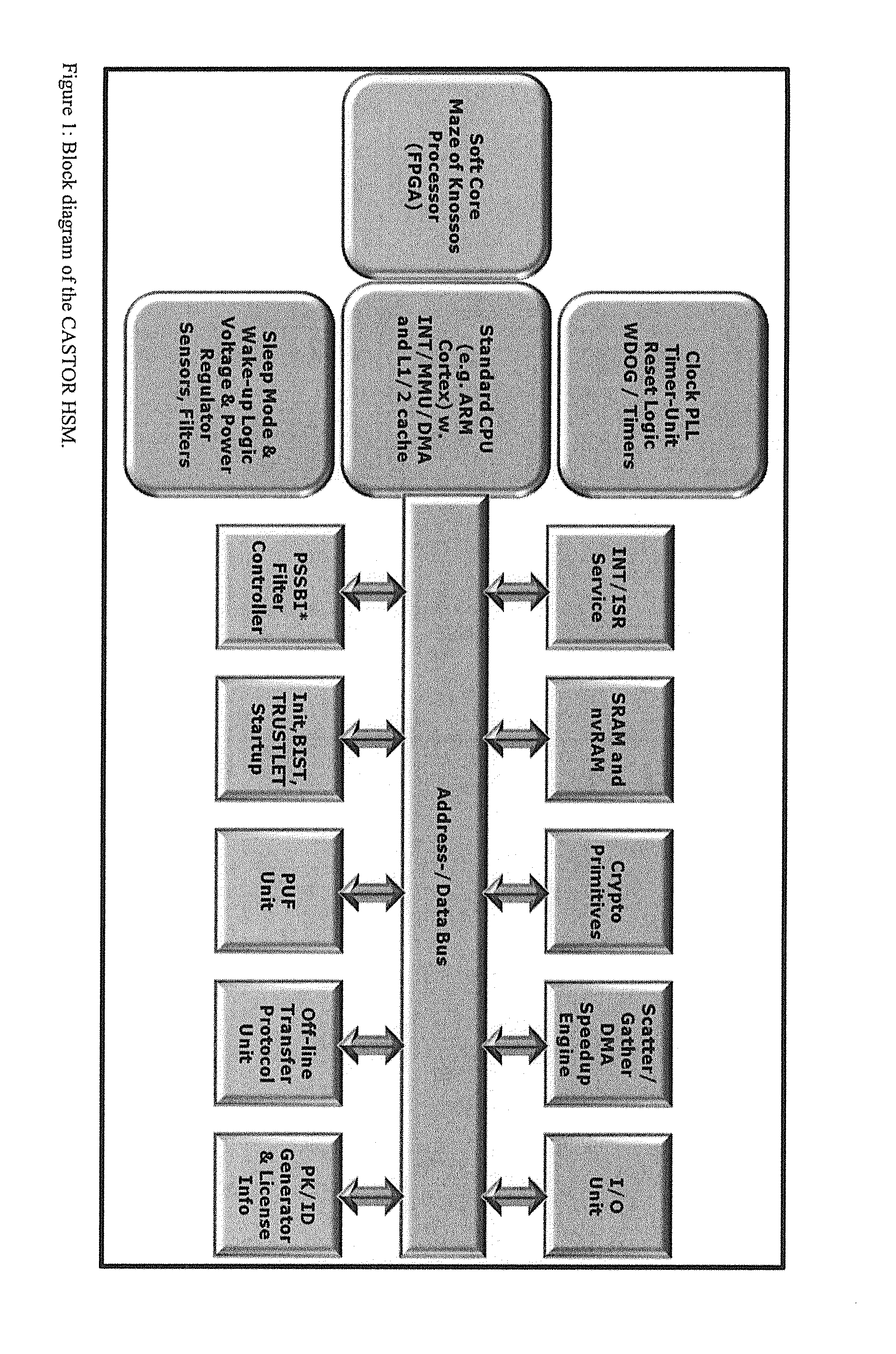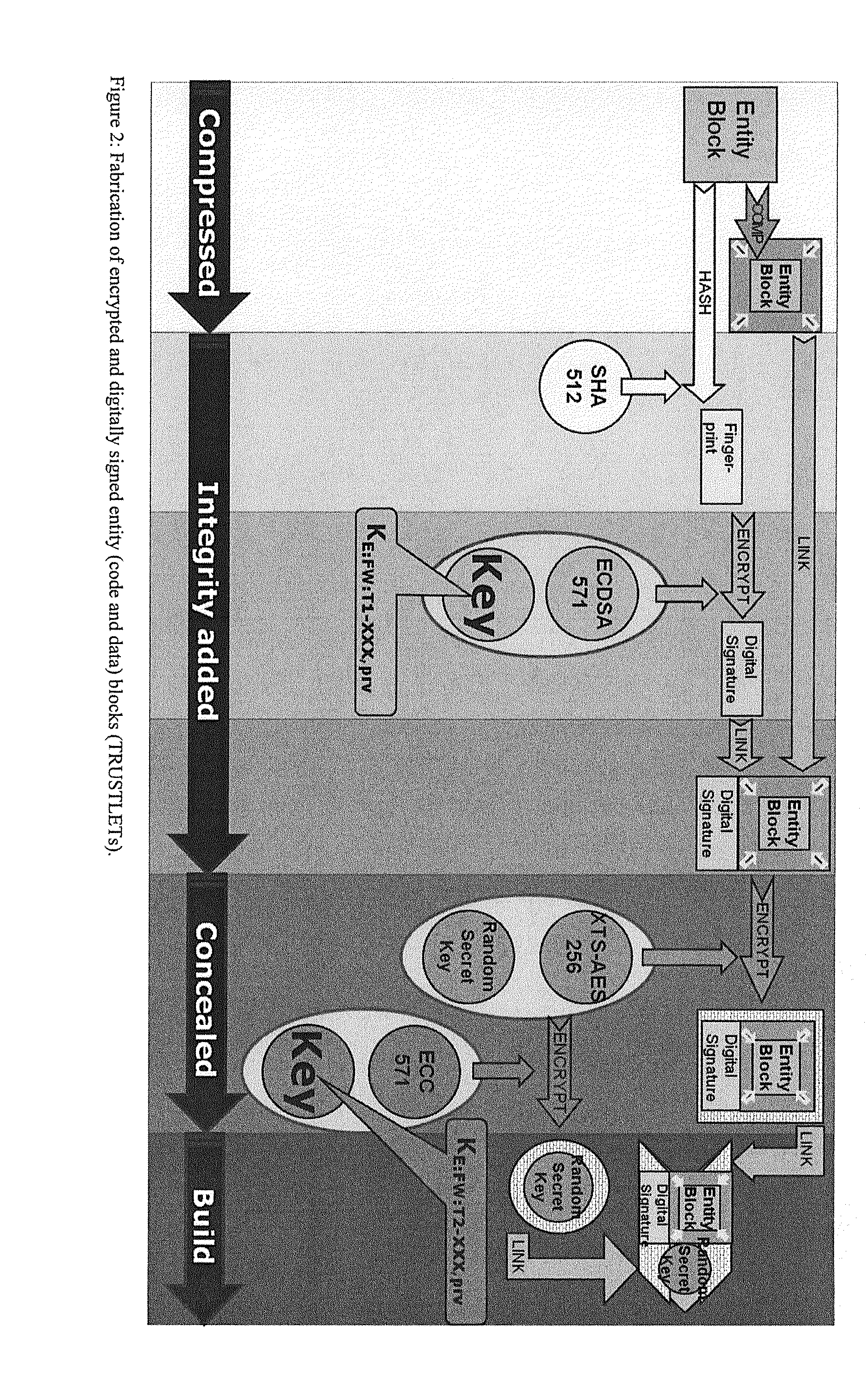Tamper-protected hardware and method for using same
a technology of tamper-resistant hardware and hardware, applied in the direction of payment protocols, platform integrity maintenance, internal/peripheral component protection, etc., can solve the problems of not offering protection in principle, failure of these systems could have an immediate impact on the real life, and the quality of existing applied solutions is not good, so as to prevent the execution of malicious code
- Summary
- Abstract
- Description
- Claims
- Application Information
AI Technical Summary
Benefits of technology
Problems solved by technology
Method used
Image
Examples
case yes
[0333]Execution of a TRUSTLET starts through a previous TRUSTLET in the (logical) chain or, if the TRUSTLET is the first TRUSTLET to be executed, with functionality hardcoded in the chip itself as already stated above. Execution means the following herein:[0334]a measurement of the current code / data state: checking the authenticity,[0335] CASTOR passes the execution control to the measured, decrypted and decompressed TRUSTLET,[0336]case no: CASTOR performs a RESET. In such case the CASTOR starts over with the same procedure as performed by a power-on-event. Alternatively to that method the following techniques may be employed: Entering into an error mode (and the indication of same to the user) or performing a (deep) sleep or power-downing the CASTOR.
[0337]This execution is performed with every TRUSTLET within the chain. Please note, there are many possible different logical chain configurations. Three possibilities are depicted in FIG. 15, FIG. 16 and FIG. 17. The chain position of...
PUM
 Login to View More
Login to View More Abstract
Description
Claims
Application Information
 Login to View More
Login to View More - R&D
- Intellectual Property
- Life Sciences
- Materials
- Tech Scout
- Unparalleled Data Quality
- Higher Quality Content
- 60% Fewer Hallucinations
Browse by: Latest US Patents, China's latest patents, Technical Efficacy Thesaurus, Application Domain, Technology Topic, Popular Technical Reports.
© 2025 PatSnap. All rights reserved.Legal|Privacy policy|Modern Slavery Act Transparency Statement|Sitemap|About US| Contact US: help@patsnap.com



